 |
 |
 |
| |
TREATMENT AND OUTCOMES OF COVID-19 IN THE US: ARE THEY DIFFERENT ACCORDING TO RACE?
|
| |
| |
CROI 2021 March 6-10 Reported by Jules Levin
Essy Mozaffari1, Aastha Chandak2, Shuting Liang1, Julie Gayle3, Mark Thrun1, Paul Hodgkins1, Richard H. Haubrich1
1Gilead Sciences, Inc, Foster City, CA, USA, 2Certara, New York, NY, USA, 3Premier, Inc., Charlotte, NC, USA
Background: Clinical practice patterns for hospitalized COVID-19 patients have rapidly evolved, including specific treatment utilization. In turn, outcomes including time to improvement and mortality have also changed, but some reports have shown disproportionate mortality in Blacks. Data on the use of COVID-19 treatments over time and temporal association with hospital mortality and length of stay (LOS), along with assessments by race, are lacking.
Methods: This was a retrospective cohort study of adult patients with a discharge diagnosis of COVID-19 (ICD-10-CM: U07.1) admitted between May-Nov 2020 using the chargemaster inpatient data from the Premier Healthcare Database. Demographic characteristics of the cohort were summarized. Utilization of remdesivir (RDV), dexamethasone, anticoagulants, tocilizumab, sarilumab and baricitinib were examined. Median hospital and intensive care unit (ICU) LOS were assessed over time. In-hospital mortality was identified through discharge status. Unadjusted mortality rates over time are reported.
Results: Between May-Nov 2020, 190,529 patients were hospitalized for COVID-19 in 823 US hospitals. Patients had a mean age of 64 years, 64% were White, 19% Black, 53% male and 65% had Medicare/ Medicaid as primary payor. Black patients were younger than White (mean 60 vs. 66 years). Significant comorbidities (>20%) were similar between overall cohort and Black patients and included chronic pulmonary disease, hypertension and obesity. From May to Nov, overall RDV utilization increased from 5% to 47%, dexamethasone utilization increased from 7% to 77% and anticoagulant treatment utilization decreased from 32% to 24% (Figure). Few patients received tocilizumab (5%), sarilumab (0.02%) and baricitinib (0.003%). Among Black patients, RDV use increased from 5% to 39% and dexamethasone use increased from 6% to 74%. The median LOS of the overall cohort and Black cohort decreased from 6 days in May to 5 days in Nov, and overall ICU LOS for patients decreased from 5 to 4 days during this time; 5 to 3 in Black patients. Overall in-hospital mortality rate decreased by 35%, and by 38% in Black patients.
Conclusion: In US hospitalized patients, use of both dexamethasone and RDV has increased approximately 10-fold from May to Nov. Over this same time, a 35% reduction in mortality, a 17% reduction in LOS and 20% reduction in ICU stay were observed. Besides age, no notable differences were apparent by race. Understanding the drivers of improvement in outcomes requires further analyses.
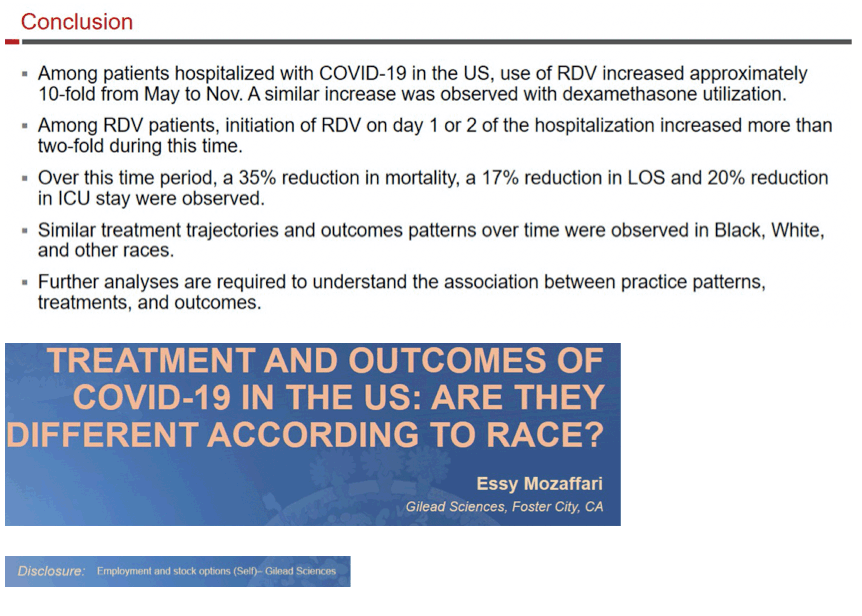
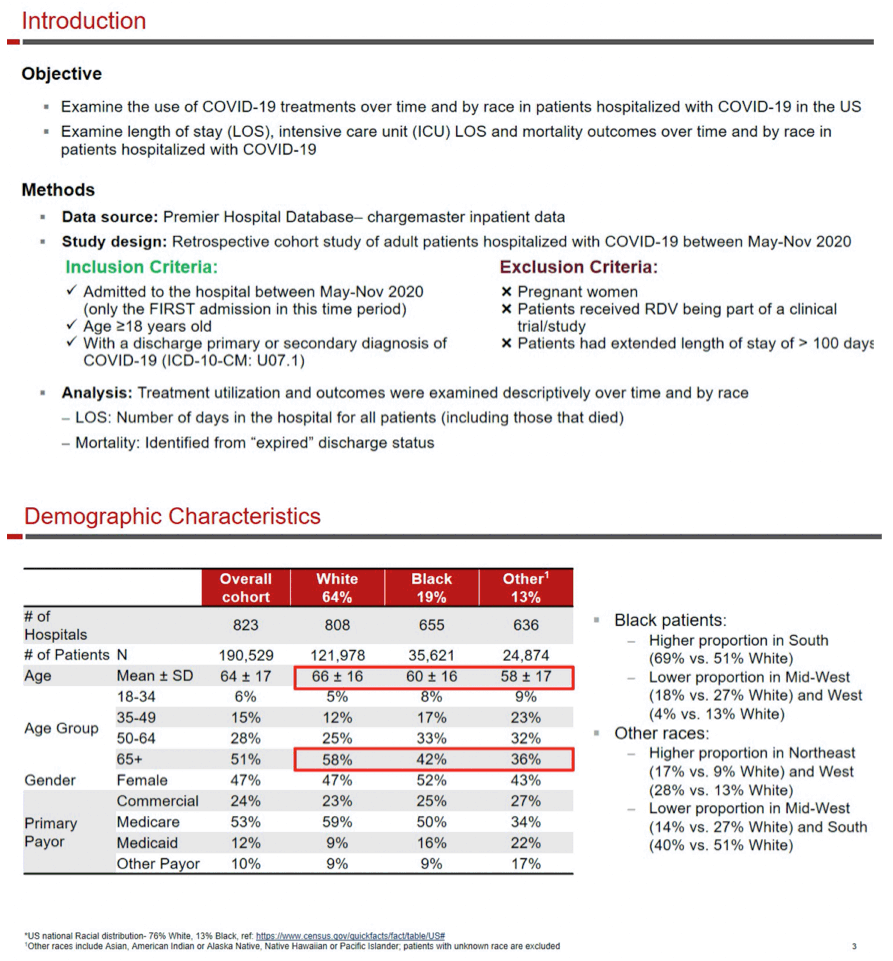
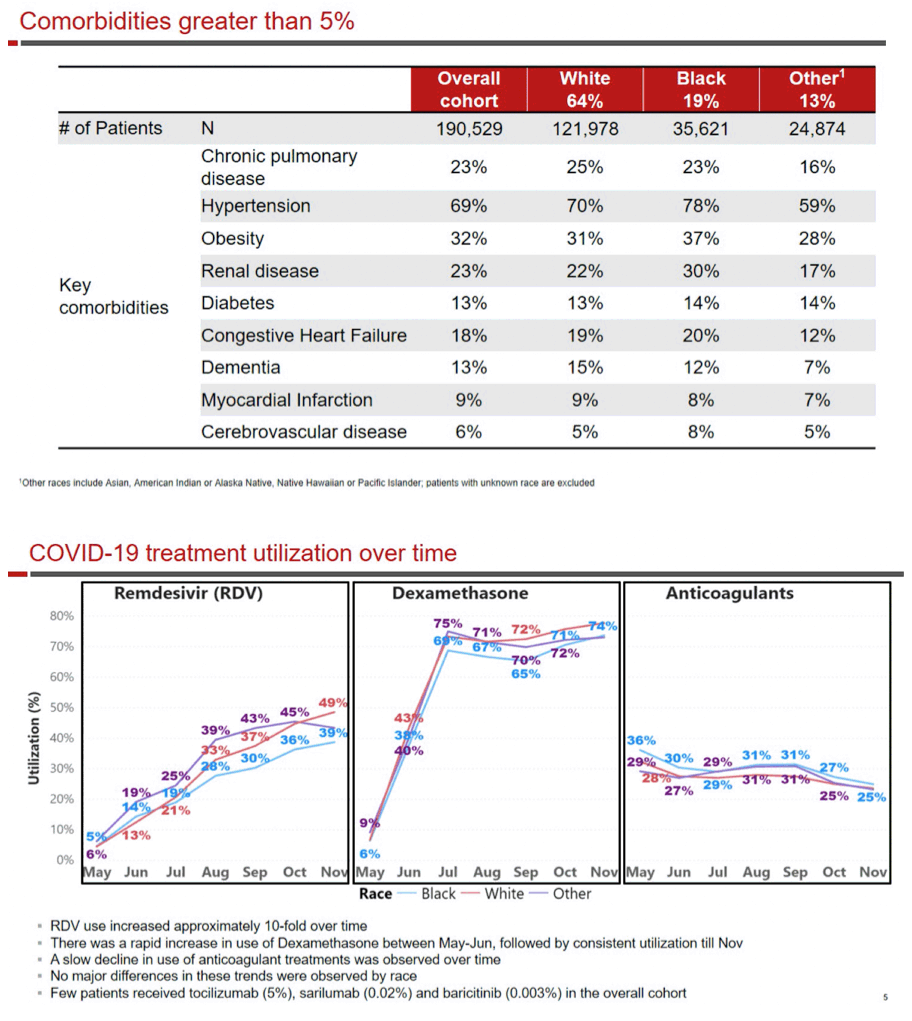
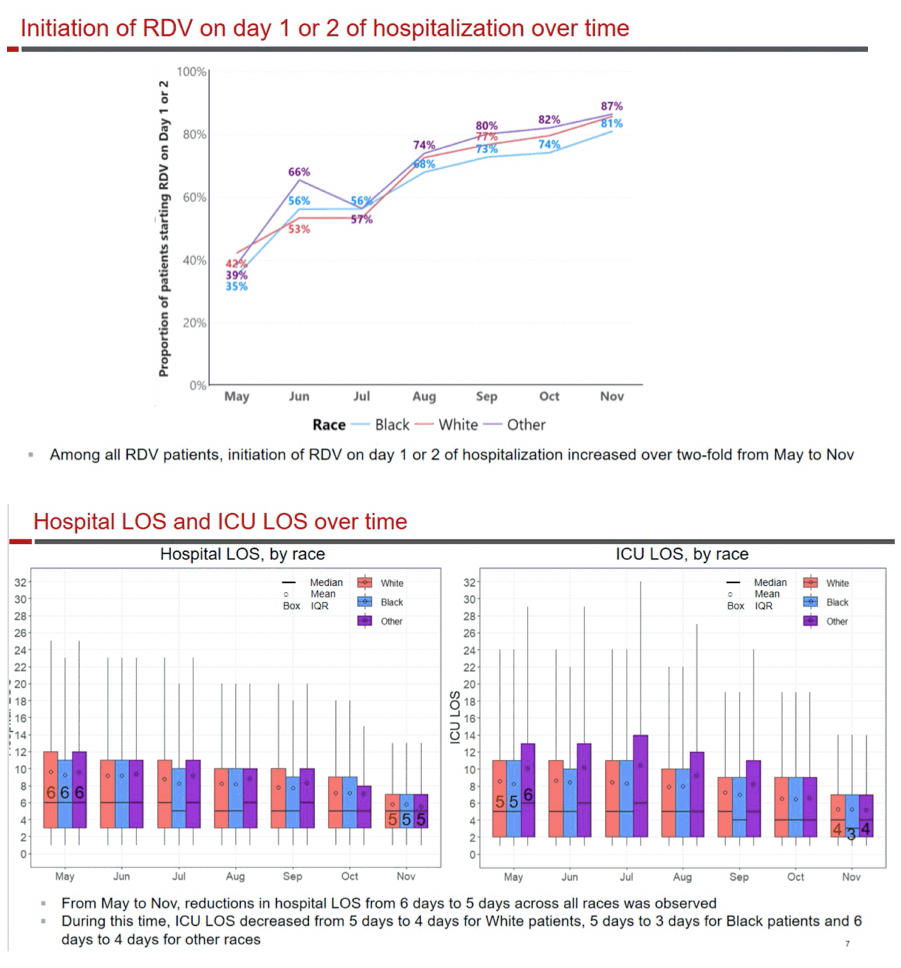
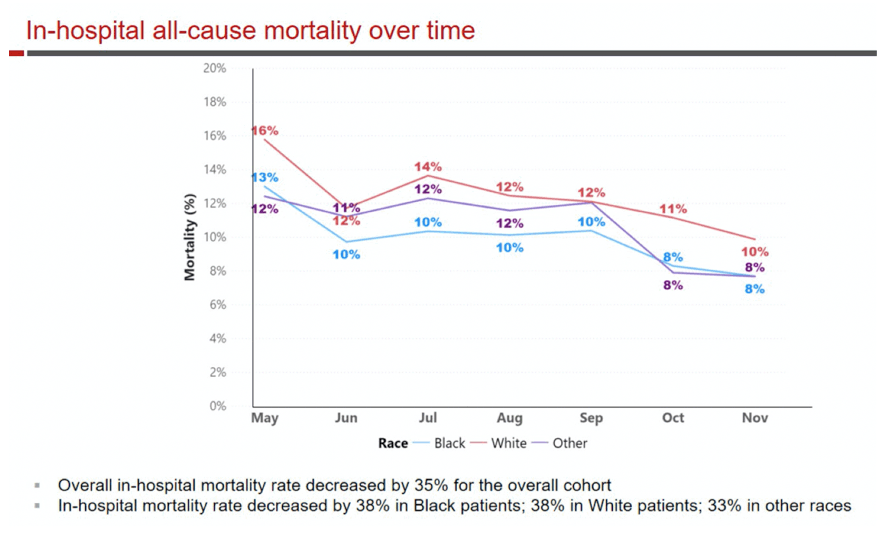
|
| |
|
 |
 |
|
|